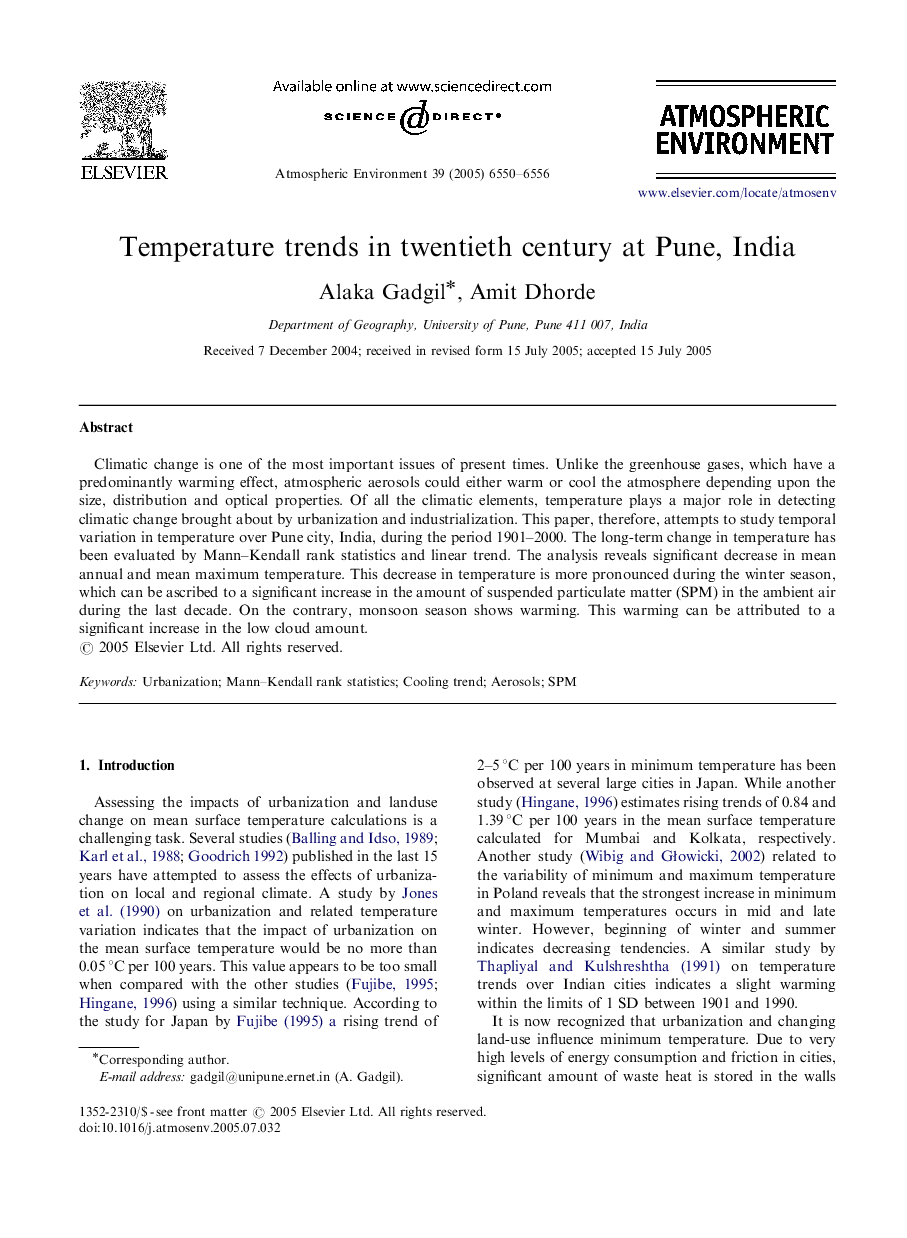| Article ID | Journal | Published Year | Pages | File Type |
|---|---|---|---|---|
| 4445334 | Atmospheric Environment | 2005 | 7 Pages |
Climatic change is one of the most important issues of present times. Unlike the greenhouse gases, which have a predominantly warming effect, atmospheric aerosols could either warm or cool the atmosphere depending upon the size, distribution and optical properties. Of all the climatic elements, temperature plays a major role in detecting climatic change brought about by urbanization and industrialization. This paper, therefore, attempts to study temporal variation in temperature over Pune city, India, during the period 1901–2000. The long-term change in temperature has been evaluated by Mann–Kendall rank statistics and linear trend. The analysis reveals significant decrease in mean annual and mean maximum temperature. This decrease in temperature is more pronounced during the winter season, which can be ascribed to a significant increase in the amount of suspended particulate matter (SPM) in the ambient air during the last decade. On the contrary, monsoon season shows warming. This warming can be attributed to a significant increase in the low cloud amount.
